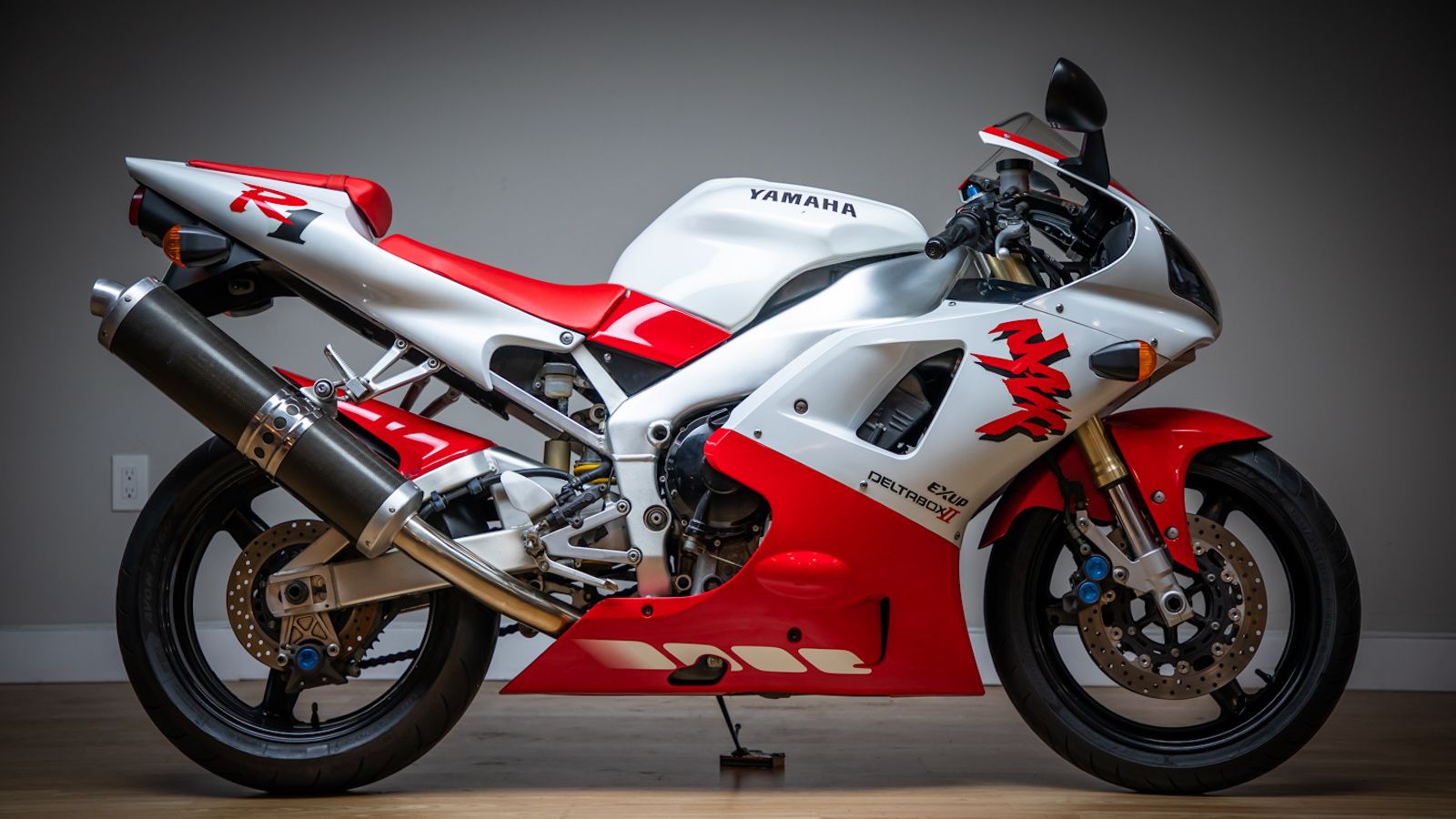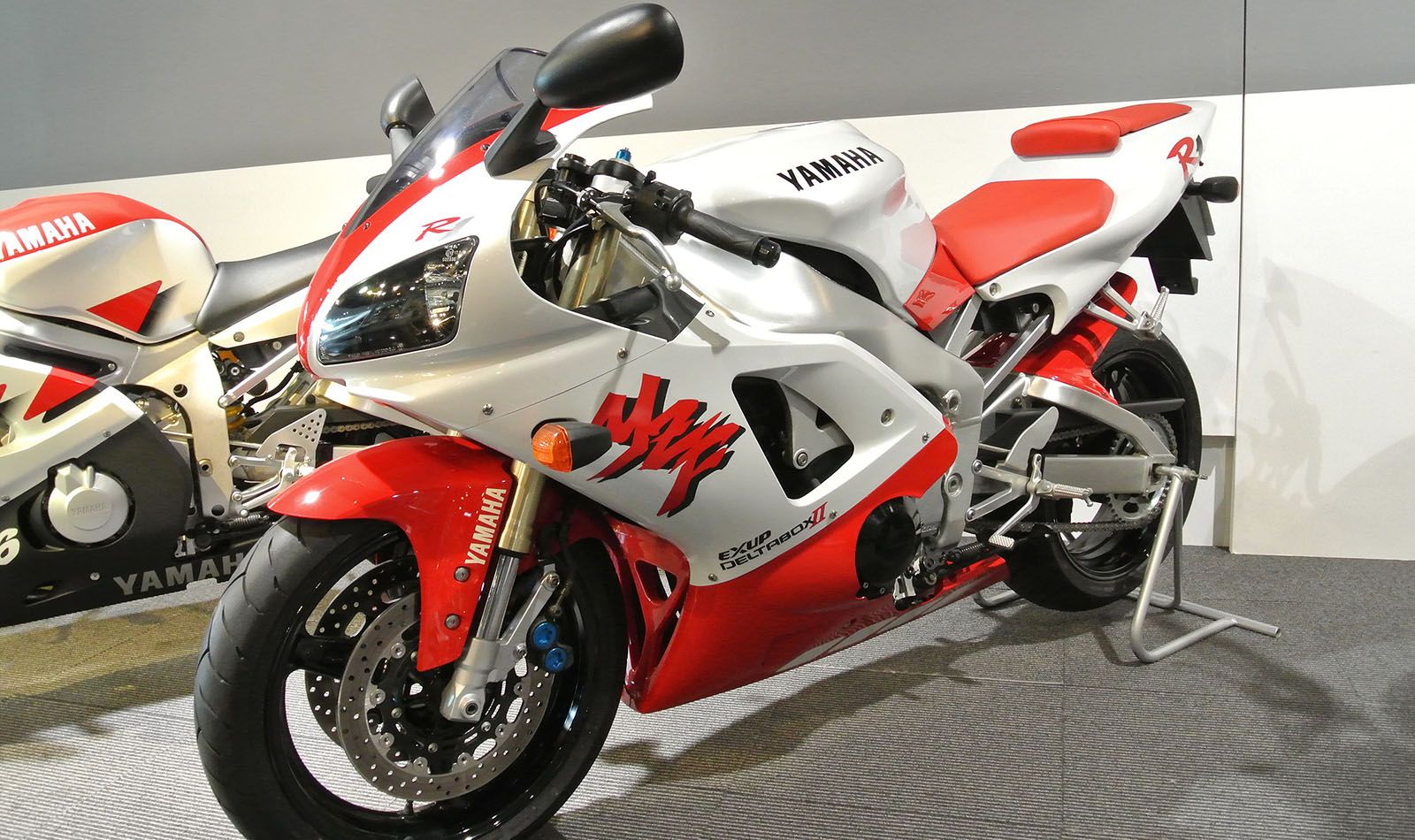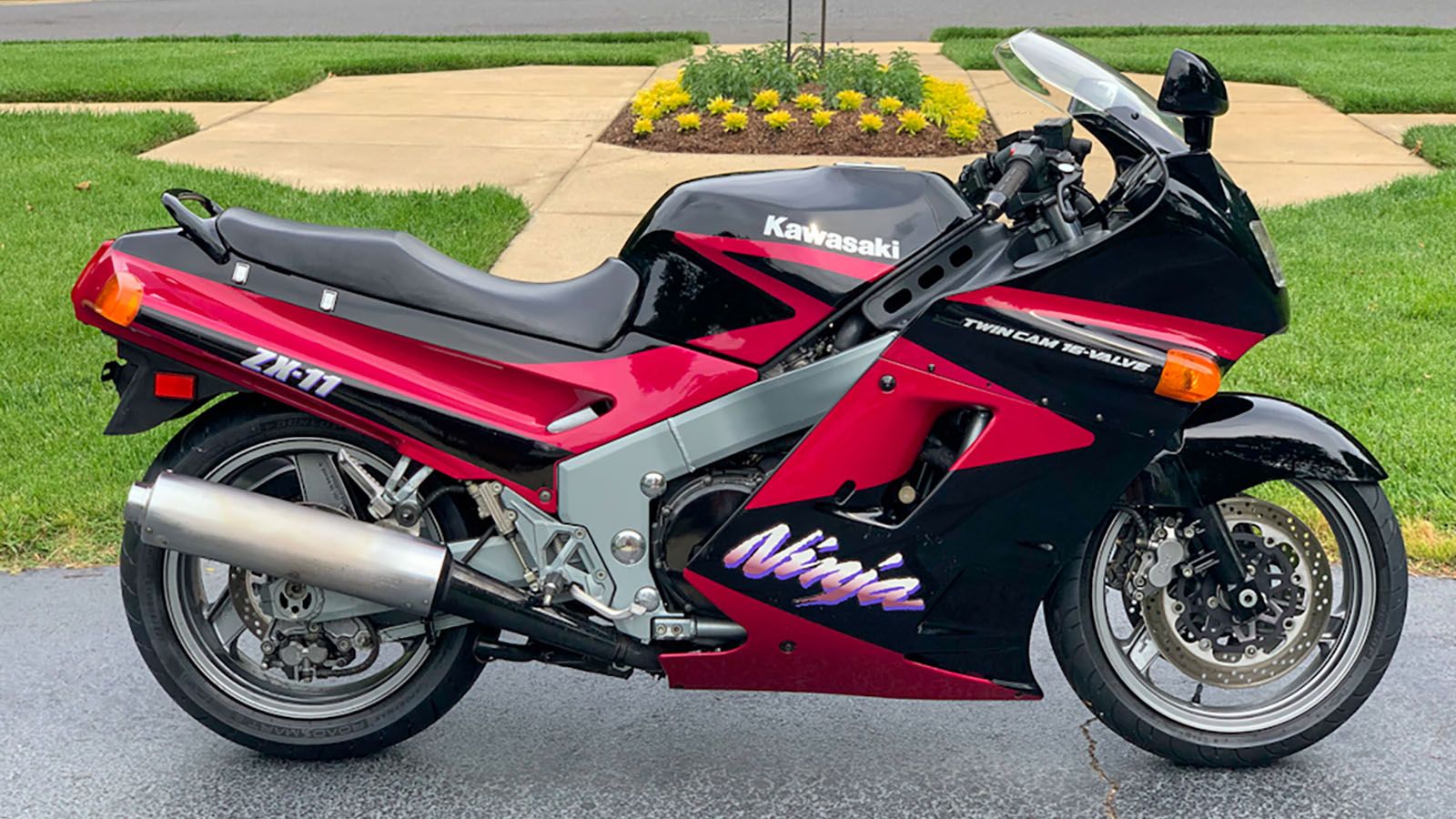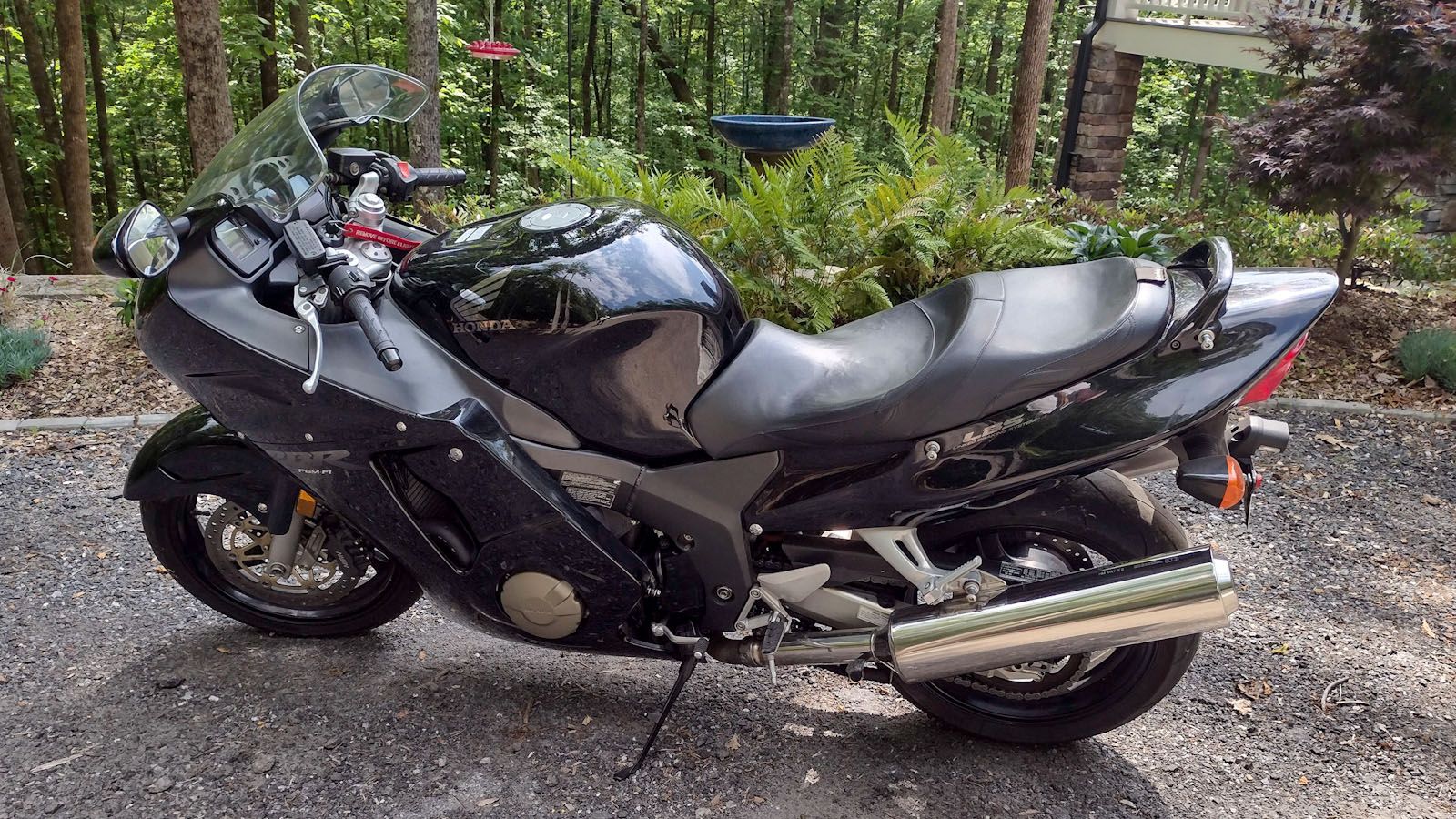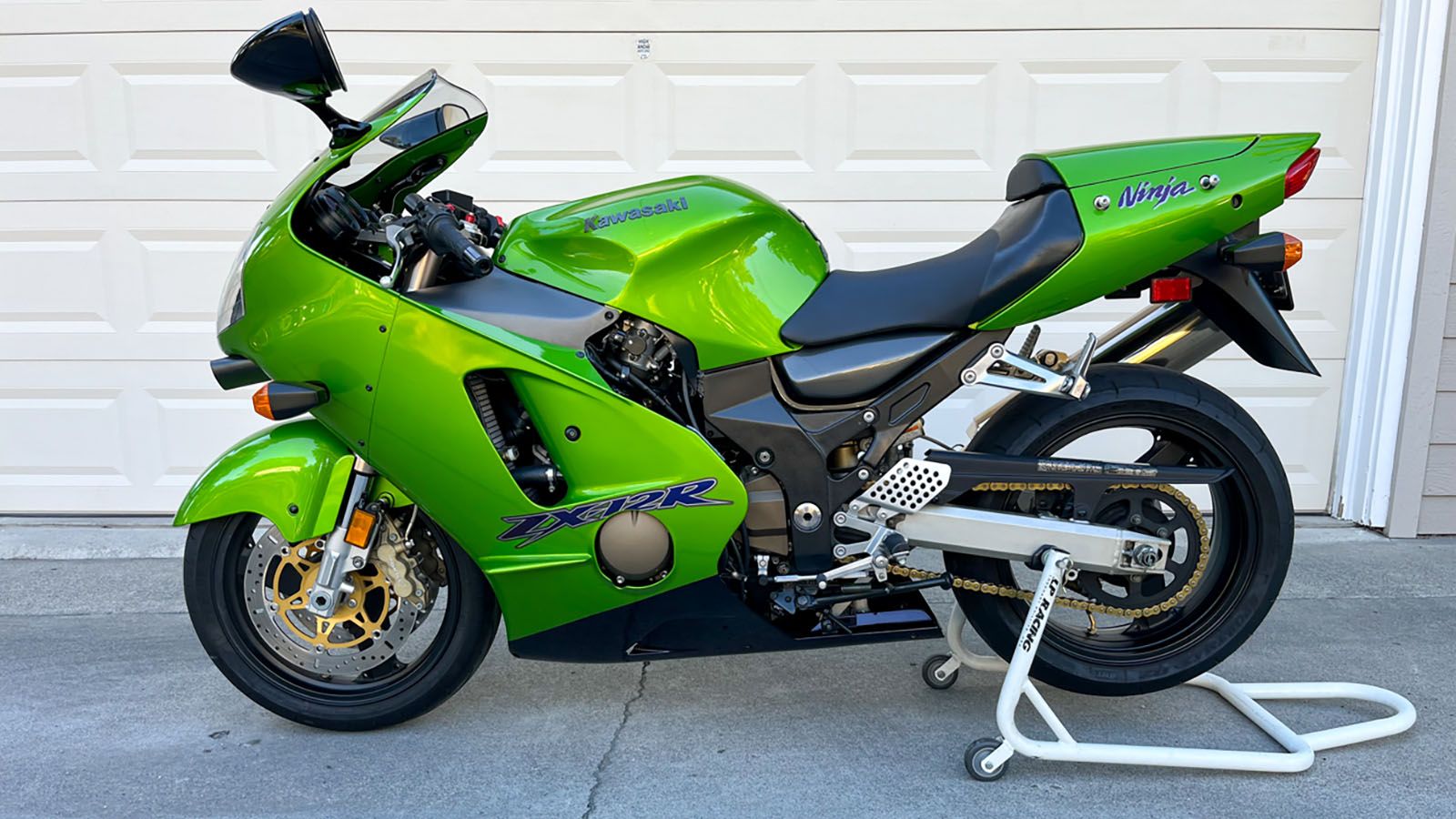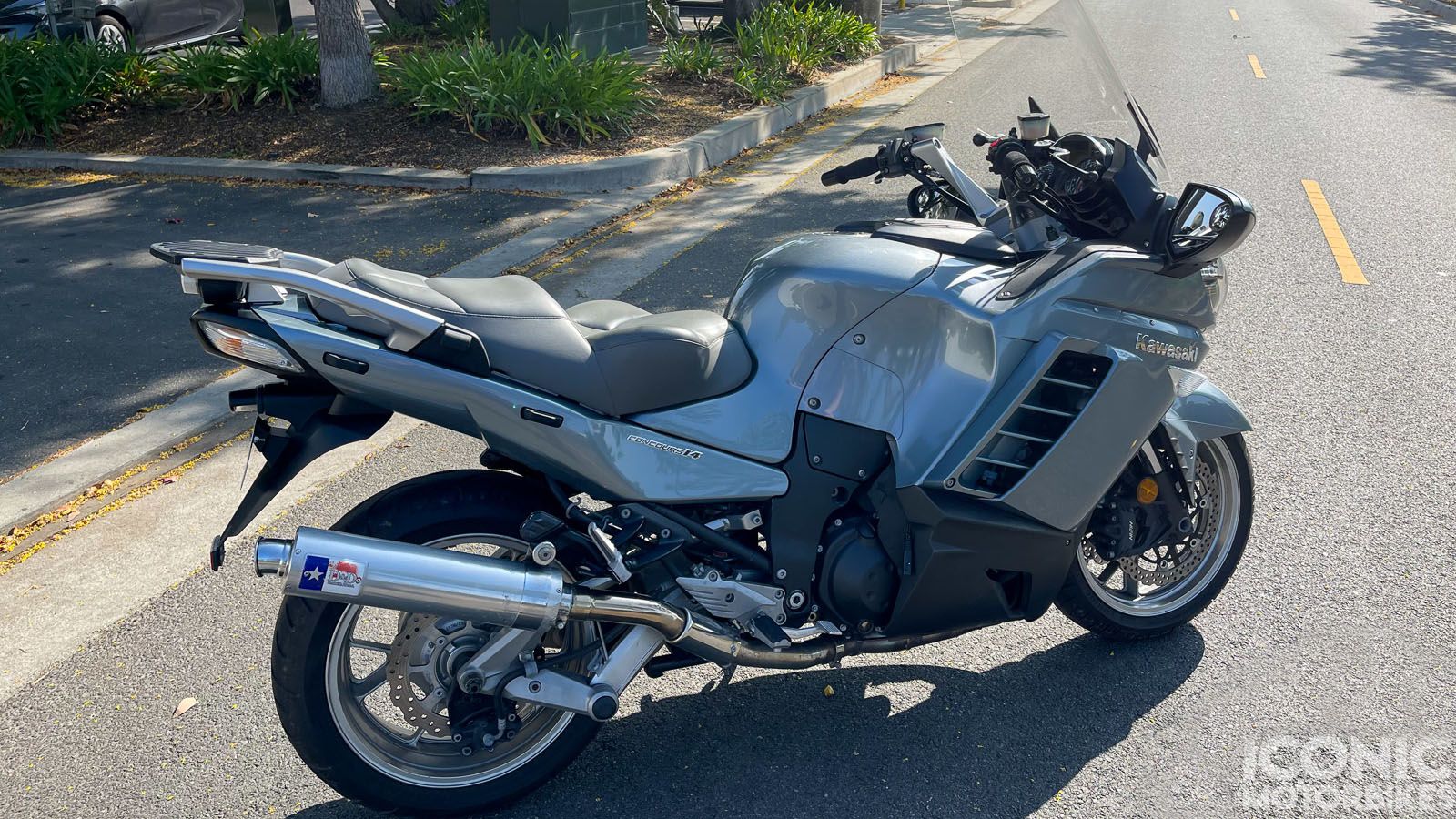To buy or not to buy? That's the question faced by every buyer when it comes to purchasing a used motorcycle. You have the choice to buy a new motorcycle, but buying a used motorcycle can save you a lot of money. The next question is how do you choose? A new 2023 Yamaha R1 straight out of the showroom will set you back $17,999 and that doesn't include freight and destination charges. A used 2015 R1 with 7,225 miles is $13,999 with a chance to make an offer below the given price. Still expensive right? A 2010 version with 5,000 miles is $8,900 and if we go further down the rung, 1998 models can be picked up for as low as $2,999 to $5,000.
The next question is condition. How do you know if the motorcycle has been abused, was it tipped over, or was it ever serviced on time? All good questions. Higher mileage motorcycles need more scrutiny if specs are out of service limits, for example, valve clearances, uni-trac linkages, bearings in wheels, and swingarms - all need to be evaluated. So now you're getting the picture. You'll be lucky if the owner carries receipts and an up-to-date log of everything that has been done to the motorcycle. It may be a good idea to take the motorcycle in question to a professional for evaluation, or you may be lucky to have a friend who's an expert in checking such things. There are an exhaustive number of checklists available on the internet that can serve as a guide during your purchase.
10 Yamaha R1 -1998
$3,300 - $4,300
The 1998 Yamaha R1's impressive engineering and great styling made it the most compact and lightest motorcycle ever built. With a 998cc displacement and compression ratio of 11.8:1, the 20-valve four-cylinder engine generated 150 horsepower and gave the motor a broad range of power that allowed it to hit 170 miles per hour at 11,750rpm. The R1’s engine featured a one-piece cylinder and crankcase that made it stiffer than most conventional engine designs allowing it to be used as a stressed member. This meant the Delta Box frame didn’t have to be overly strong resulting in a bike that weighed less than some 600cc motorcycles.
The Yamaha R1 had great acceleration and handling and was extremely reliable, requiring little to no maintenance. However, if you’re in the market for a 98-01 Yamaha YZF R1, just remember to check the transmission. Abused R1 gearboxes develop a clunking going from 1st to 2nd indicating the gearbox is on its way out and those that pop out of neutral, well, the gear-box is history. Nothing a set of new gears can’t fix, but if you’re not mechanically inclined, be prepared to spend some money.
9 Kawasaki Ninja ZX-11 - 1990
$4,900
The original fast boy, the Kawasaki Ninja ZX-11 (ZZR-1100 in Europe) needs no introduction. Kawasaki engineers set out to create the fastest motorcycle in the late eighties. The carburetted 1052cc, liquid-cooled, 16-valve, Dual Overhead Cam System engine held within a rigid, yet flexible aluminum twin-beam frame, propelled the ZX-11 to 176 miles per hour (283 km/hr), a record run that it made in 1990.
Using an old hot-rodder trick and technology used in F1, a never-done-before ram-air system was developed. The faster the motorcycle ran, the more powerful the engine became as cold air rammed through a single front duct opening in the upper fairing, via the enormous sealed air-box that sat below the gas tank, through the intake ports, and into the engine. It had a typical flat spot between 4,000 – 4,500 rpm, but once you got past 5,000, the ZX-11 kicked into hyperdrive. Its styling is unlike anything, even to this day, with a curvy front faring with in-built indicators and streamlined fairings on either side of the motorcycle, snaking below, along the length of its seat. Extremely refined and efficient, you can ride two-up all day and never get tired. The Kawasaki Ninja ZX-11 held the speed record for six years until it was de-throned by the Honda Blackbird 1100XX.
8 Honda Blackbird - 2001
$4,500
Aptly named after the SR-71 Blackbird, Lockheed’s spy plane, the Honda CBR 1100XX was built with the plan of dethroning the Kawasaki Ninja ZX-11. With its wind-tunnel-designed bodywork aiding the Honda to 180 miles per hour (290 km/hr), the 1137cc CBR1100XX was more refined than the ZX-11.
At 591 lbs, it featured 43 mm front forks, a nine-plate wet clutch, dual balancer shafts with later versions of the Blackbird getting fuel injection, and linked braking that worked very efficiently. Like the ZX-11, it suffered from a lull-less performance at around 4,000 rpm, but once it cracked past 5,000 rpm, its acceleration was vicious. The Honda CBR1100XX held the Guinness World record for the fastest production motorcycle built until Suzuki came along and knocked the Blackbird off of the mantle with the Hayabusa. The 1999 models onwards got fuel injection and are a great buy if you’re in the market for one.
7 Kawasaki ZX-12R - 2000/2002
$3,600 - $4,900
You can't go wrong with the Kawasaki ZX-12R, though it's not exactly a super-sport motorcycle, but a Hypersport, and it was manufactured to take on the Suzuki GSX1300R Hayabusa and take back the speed crown it originally held for six years with the outgoing ZX-11. The original 2000 model year was unrestricted and had the 200 miles per hour (340 Km/hr) instrument gauges. Pre-production testing had put the ZX-12R at 220 horsepower and 197 miles per hour, more powerful and faster than the Hayabusa. At last, Kawasaki was back on top. Unfortunately, that information caught on too quickly, causing a furor in the European ministry. Political connections threatened to ban it, which quickly had Kawasaki scrambling to release restricted versions from 2001 onwards, thanks to the Gentleman's "186mph" Agreement.
With its 593 lb heft and size, the 1198cc, water-cooled inline-four, 16-valve engine is still good for 186 miles per hour should you want to hit that end, and with its agile handling in and out of corners, it's an extremely capable motorcycle for daily commuting and touring.
6 Yamaha FZ1 - 2012
$4,300 - $4,995
The Yamaha FZ1, also known as the FZS1000 in Europe, ran for two generations – from 2001 to 2005 and then from 2006 to 2015. The first generation engines were carburetted 998cc, 20-valve YZF-R1 engines that had been modified and were enveloped in a steel tubular frame. The first-gen engines produced 143 horsepower at 10,000 rpm and 78 foot-pounds (106 Nm) of torque at 7,500 rpm. These were specifically model year 2003 versions that had a top speed of 162 miles per hour (260 Km/hr)
The second-generation FZ1 was completely different from the first-gen models. The main differences included a new chassis, suspension, and engine based on the 2004 – 2006 YZF-R1. It outputted 150 horsepower and was tuned for more mid-range. It had a heavier flywheel to keep it ticking over, a revised balancer shaft, and reduced lift and duration camshafts that improved performance in the low-end. Comfortable and powerful, the FZ1 could be flicked into corners with great ease which spoke volumes of its handling. Further iterations saw very few changes, and it remained almost unchanged except for suspension tweaks, fuel injection revisions, and ECU re-mapping over the course of its production.
5 Triumph Speed Triple - 1998
$3,150
Tall, heavy, and reasonably practical for everyday use, the muscular Triumph Speed Triple was launched way back in 1994 and evolved from the café racers of the sixties. With a 885cc, water-cooled, triple-cylinder, DOHC engine that acted as a stressed member with a steel spine frame, the Triple generated 97 horsepower at 9,000 rpm.
All Speed Triples were 885cc though there was a brief run of 750cc versions at the time until newer generations featured increased displacement. The Speed Triple lives up to its name with its smoothness, flexibility, and handling, thanks to its frame and Kayaba 43mm front forks and a mono shock absorber with a progressive linkage that could be adjusted for preload and rebound damping. These combined features give it excellent cornering abilities without upsetting stability. Pop on one of those cafe-racer front cowls, and you've got yourself a true British cafe racer.
4 Triumph Street Triple 675 / 765 - 2012
$4,999
Light, agile, and built for daily commuting, the Triumph Street Triple was released in late 2007 and was closely based on the Speed Tripe 1050 but used a 675cc engine borrowed from the Daytona 675. The first gen Street Triples were re-tuned to make them more street-friendly for everyday use, but powerful enough to generate 106 horsepower and 51 foot-pounds of torque.
The second-generation Street Triples barely had any revisions except for them getting bug-eye headlights. Third generations featured a new chassis and revised rims that reduced its overall weight by 13.2 lbs. The engine was mostly unchanged except for a taller first gear taken from the Daytona 675. In January 2017, Triumph announced the 675cc Street Triple’s replacement with a higher displacement model of 765cc, an increase of 90cc (with four different models with different levels of equipment that year), but it wasn’t something to be missed if you rode a pre-2016. Current generations have more powerful 130 horsepower engines with Brembo braking and an IMU-based system that features cornering ABS and traction control. If you’re in the market for one, the third gens produced between 2013 and 2017 are the ones to look at.
3 Aprilia Tuono - 2002
$4000 - $5000
Launched in 2002, the early Aprilia Tuonos from 2003 to 2005 was based on the 2002 RSV Mille that used its frame, engine, suspension, and brakes. The majority of parts were interchangeable between both models until the RSV 1000 R was introduced, replacing the RSV Mille. The Tuono would see iterations through the years with the RSV Tuono Factory, the Tuono 1000 R, Tuono 1000 R Factory until the V4 1100 Factory was introduced in 2012. It was redesigned based on the RSV4 with a 1000cc, 55-degree V4 motor with Aprilia’s APRC package (Aprilia Performance Ride Control) featuring 8 levels of TC, 3 levels of wheelie control, and a 3-level race ABS system.
If you’re looking for something Italian and don’t want to spend a whole load of money as they will set you back a pretty penny, $16,199 to be exact, the good ‘ol Tuono war horse is brilliant for getting you around.
2 Honda VFR800 - 2007
$4,995
If there’s one thing about older Honda motorcycles, especially the older ones from 2000, they are extremely reliable and can run with little to no maintenance – don’t take that literally, but we’re sure you know what we mean. The pre-2000 VFR800 was heavily inspired by the Honda RC45 racer but different from previous V4s as the camshaft gear drive was relocated from the center to the right side of the engine.
The generation from 2002 to 2013, the V4 VTEC, operated on 2-valves per cylinder at low rpms and all 4-valves per cylinder would kick in at higher rpms in the 6800 – 7000 range. After much criticism about the system and abruptness in the power coming on tap, Honda lowered the VTEC activation threshold to 6,400 rpm, though the system kicks in again, should the rpms drop below 6,100. A lot of mechanics will swear to their valve clearance reliability never being out of spec. That’s one thing you don’t have to worry about when you go out to buy one, as long as it hasn’t been abused.
1 Kawasaki Concours 14 - 2008
$4,995
Based on the Kawasaki ZX-14 platform with a 1,352cc, water-cooled, inline-four, 16-valve, VVT engine, the Kawasaki Concours 14’s displacement allows it to easily output 150 horsepower at 5,000 rpm and 100 foot-pounds of torque. It has all the essentials in place for long hauls and with its well-developed engine management system, it manages fuel economically.
It’s a brilliant sport-tourer that ticks all the right boxes in our books. It’s not a behemoth like other tourers out there, yet it is comfortable, powerful, and has all the essential technology one would expect of it. Well almost. Our one big gripe with Kawasaki is still the absence of cruise control, but that is down to Kawasaki not having adopted fly-by-wire technology that is essential for its functioning. But if you’re still missing it, you could install a Throttlemeister. It's not your top-of-the-line-from-the-manufacturer cruise control, but you're responsible for its installation, operation, and consequences. Connie is heavier than the ZX-14R, but once you get going it tracks well and is extremely stable. If you happen to find one in good condition, it’s not something you will want to pass on, if touring is your thing.

